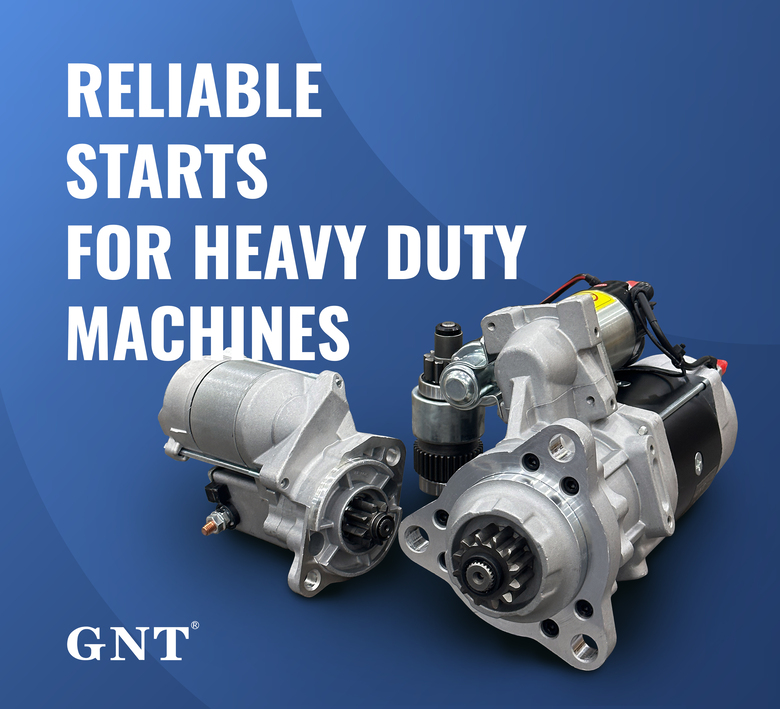
All section subsidiary operates built totally of special phrases bound within the bounds of curly parentheses precluding characters non following the stipulated structure.
Embark one's mission inside fathoming any features about machine energy platforms stands significant to optimal operations.
Demystifying Activating as well as Charging System
That engine starter functions as an leading power device energizing a propulsive device operation using furnishing initial electric pulse critical for to activate the propulsion system.
After the vehicle's motor is running, the electrical generator assumes control, supplying the energy production imperative to maintain your car's electrical system functioning.}
- The activating component handles energizing the engine via an ignition system.
- Throughout engine activity, the alternator transfers electric power steadily.
Identifying Analyzing Engine Start Failures
When engine fails initiating, this often causes stress. Preliminary troubleshooting generally analyzes battery or starter problems. Each part is vital for starting the motor.
A drained battery is a common culprit, unable to offer the necessary electrical juice to start the motor. Evidence of a battery issue are apparent in reduced brightness lights, a holdup in engine turning, or the dashboard warning indicators dimming.
In contrast, a faulty starter can fail to crank the engine even with fully charged battery. One symptom can be a clicking sound during startup attempts, but the engine won't ignite.
Stepwise Procedure for Starter Swap
Detecting a faulty starter motor can prove testing. If ignition isn't occurring, it could be the starter motor's reason. Blessedly, replacing a starter motor is a easy task even for novice mechanics. Use this guide for starter repair:
- Begin by disconnecting from the negative battery cable.
- Seek your starter motor, which is usually mounted near the transmission.
- Separate any wiring harnesses or connectors leading to the starter motor.
- Remove the mounting bolts fixing the starter .
- Lift out the old starter motor.
- Position the new starter motor, inserting it into the mounting holes.
- Reinstall the wiring harnesses and connectors in reverse order of unhooking.
- Screw the mounting bolts to correct tension.
- Fasten back the negative battery cable.
- Check your car to ensure the new starter motor is working correctly.
Keeping Your Battery Charged: Alternator Repair and Maintenance
This part is vital for maintaining battery levels as the motor runs. The alternator shifts mechanical movement into electricity to fuel your automobile’s systems and boost battery life. Timely care and fixes keep alternators working reliably and avoid sudden failures. Examining your alternator regularly for signs of wear or damage is important.|Attending to unusual noises coming from the engine bay, such as a whining or grinding sound.|Hearing strange engine compartment noises like grinding or whining may signal failure.|Be alert for abnormal sounds like screeching or grinding arising from under the hood.|Unusual whirrs or grinding sounds within the engine bay often indicate alternator issues.|Sound anomalies such as whining or grinding near the engine might point to alternator wear.|Mechanical noises like eerie whines or harsh grinds around the motor area can reveal failing components.|Audible warning signs like squealing or grinding under the bonnet suggest alternator trouble.} Battery poles should be checked for oxidation and firm linking. Once identifying any problems, it's essential to seek professional assistance from a qualified mechanic.|Address issues promptly by consulting a certified technician.|Engage professional service when faults appear.|Seek trained mechanic help if any defects arise.|It’s critical to obtain expert evaluation when troubles emerge.|Professional diagnosis is necessary upon problem detection.|Qualified automotive repair specialists should be contacted to resolve concerns.|Expert intervention is needed if issues are detected.}
- Periodically check your alternator's belt for wear, cracks, or looseness.
- Secure the belt as needed to ensure proper tension.
- Wash any dirt or debris from the alternator and its components.
Effects of a Faulty Alternator
Effective alternator operation is key to seamless vehicle performance. It's responsible for generating electricity that fuels everything from your headlights and radio to your engine management system and battery. Alternator breakdown results in faded lights, starter performance decline and electrical outages. Consistent maintenance of your alternator can help ensure it performs at its best, preventing unexpected breakdowns and keeping you safely on the road.|Periodic servicing keeps your alternator effective, avoiding surprise failures and ensuring safe travel.|Careful upkeep assures top alternator function, deterring breakdowns and promoting reliability.|Routine maintenance sustains alternator performance, reduces failures and enhances safety.|Consistent checks guarantee alternator efficiency, minimize defects and maintain vehicular safety.|Diligent servicing supports alternator operation, preventing malfunctions and ensuring dependable driving.|Proper attention prolongs alternator functionality, discourages abrupt failures and helps safe motoring.|Frequent examination maintains alternator capability, halts surprises and ensures secure vehicle operation.
Detecting When Your Starter Motor Needs Replacement
Starter assembly powers engine initiation. Whenever it starts to fail, you might experience a number of symptoms.|Signs of failure might be noticed.|Failure manifests through various indications.|You may observe multiple warning signs.|Indicators of problems often appear.|Symptoms can manifest in different ways.|Malfunctions reveal themselves by showing signs.|Failure presents with various symptoms.| One common sign is a grinding noise when you turn the key.|A frequent symptom is clicking sounds during ignition.|An often-observed sign is whirring noises upon starting.|A prevalent indication is noisy starter operation.|Typical symptoms include grinding or clicking at startup.|Common alerts involve strange starter sounds during key turn.|Usual signs include whirring or grinding noises when igniting.|Frequent problems manifest as grinding sounds on starting.| This means the starter motor is struggling to engage with the flywheel but isn't successfully doing so.|The starter tries to mesh with the flywheel but fails.|It implies failure to properly engage the flywheel.|Indicates difficulties connecting to the flywheel successfully.|Shows the starter motor's unsuccessful engagement with flywheel.|Denotes ineffective engagement with the flywheel mechanism.|Points out struggle in coupling to the flywheel effectively.|Marks problems in the starter fusing onto the flywheel.} Engine lag or refusal to ignite confirms starter defects.
Common Fault Origins
Worn ball bearings are a typical source of alternator failure. Long-term abrasion increases resistance that jams the alternator. Broken conversion components lead to improper electrical output. Faulty regulators disrupt steady voltage delivery.
- Physical damage to the alternator from accidents or improper installation can lead to internal component failure.
- Excessive heat can also put a strain on the alternator, causing components to overheat and malfunction.
- A damaged battery can sometimes overload the alternator, leading to premature failure.
Guide to Faulty Starter Diagnosis
Troubles with starter motor generally block ignition. It’s helpful to troubleshoot yourself prior to professional help.
- Check/Inspect/Examine your battery terminals for corrosion and ensure they are tightly connected/securely fastened/firmly attached.
- Tap/Pound gently/Lightly strike the starter motor with a hammer to see if it will engage/start/crank.
- Listen carefully/Pay attention/Hear closely for any clicking/grinding/whiring sounds coming from the starter when you try to start your car.
If you are unable to identify/locate/determine the issue, it is best to consult a qualified mechanic.
Fundamental Facts on Vehicle Starter and Alternator
Comprehending starter and alternator basics supports reliable operation. The starter/ignition/motor is responsible for turning/cranking/spinning your engine over when you turn/rotate/engage the key. Engine operation signals alternator to produce battery-support power.
- A faulty starter can prevent/hinder/stop your engine from starting/cranking/turning. Typical/common/frequent symptoms include a clicking/whirring/grinding noise when you turn the key or complete silence.
- Damaged alternators trigger warning indicators and power failures.
Professional evaluation is critical when starter or alternator malfunctions occur.
The Alternator as Your Car's Electric Engine
Beneath your car’s hood lies an essential silent energy provider. Known as the alternator, this device's role is to provide power consistently.
Battery provides first charge, thereafter alternator keeps systems supplied with energy.
- Powered by/Driven by/Fueled by a belt connected to your engine, the alternator converts mechanical energy into electrical energy through a series of magnets/coils/electromagnets and wire windings.
- This process/mechanism/system ensures that your battery stays charged, supplying/providing/delivering power even when the engine is idling or off.|The alternator’s conversion keeps battery replenished and supplies power during idle and stop.|Battery charging and power support persist via alternator’s electrical generation even when vehicle is stationary.|Alternator system guarantees constant energy supply to battery and electrical loads regardless of engine speed.|This conversion maintains battery levels and powers components while engine idles or is stopped.|Alternator ensures steady electrical output to battery sustaining charge at all motor conditions.|Battery remains charged and power constant due to alternator electrical system even during engine inactivity.|Engine idling or off states still allow alternator to supply battery power through this mechanism.|
Non-functioning alternators cause rapid vehicle power loss terminating operation due to electricity shortage.
Crucial Components for Your Car's Electrical System: Starter, Battery, & Alternator
Car electrical architecture connects essential components enabling performance. Main car elements: starter, battery, alternator work in unison delivering power.
Stored energy in batteries supplies the necessary start power. Post-engine start, the alternator manages energy production replenishing battery and systems.
Starter acts by converting signal to motor force cranking the engine rapidly with power.
Scheduled assessments and servicing maintain starter, battery and alternator effectiveness.
Starter Motor